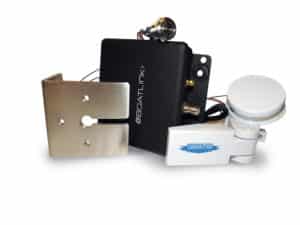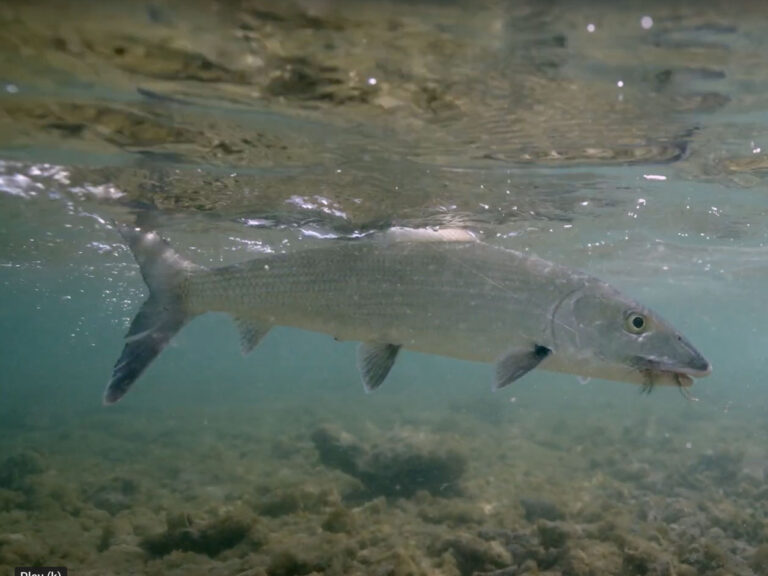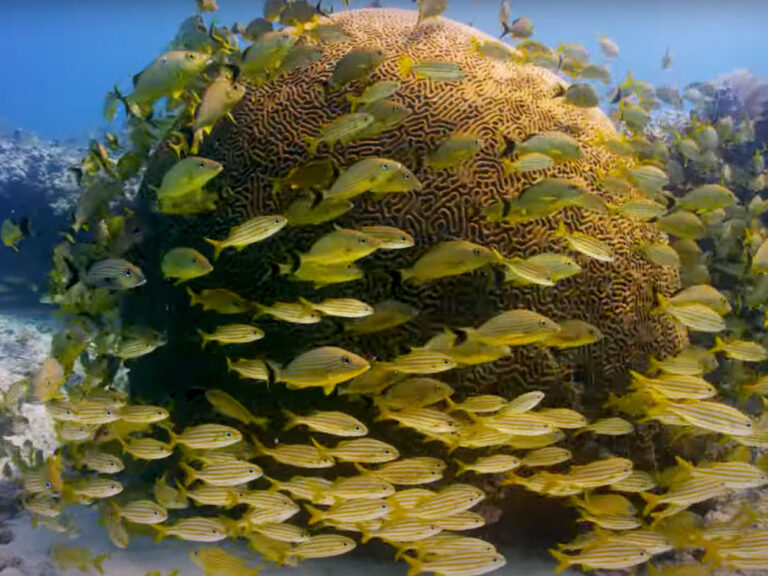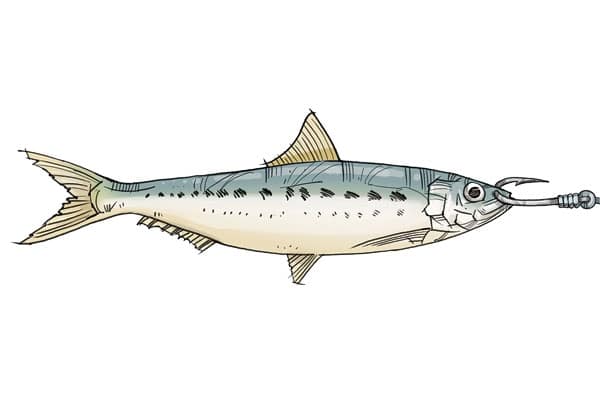
How to Hook a Sardine
Pinning a sardine crosswise through the nose is most common. It’s not the most natural presentation, but it is hard to tear the hook out on the cast. The bait also swims normally on the retrieve, increasing hookup chances. Use this method if fishing with any type of sinker. All illustrations by Joe Mahler / www.markerjockey.com
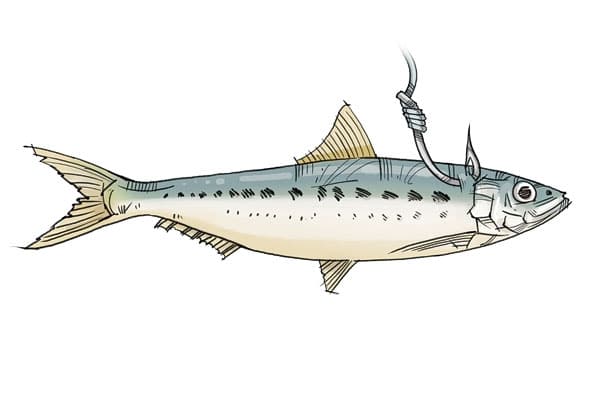
How to Hook a Sardine
Popular on anchovies, this method allows baits to swim naturally and move away from the boat. The hook is invisible from the opposite side, a critical factor when predators are being particularly persnickety. Passing the hook behind the gill collar requires a gentle touch on the cast.
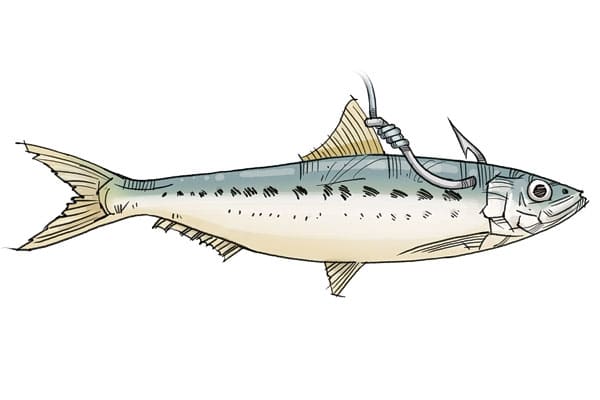
How to Hook a Sardine
This less-known method for hooking sardines is based on the principle that tuna attack from below. With the hook passed through the meat of the back just behind the head, the hook and trailing line will be obscured from below. Baits hooked this way stay near the surface.
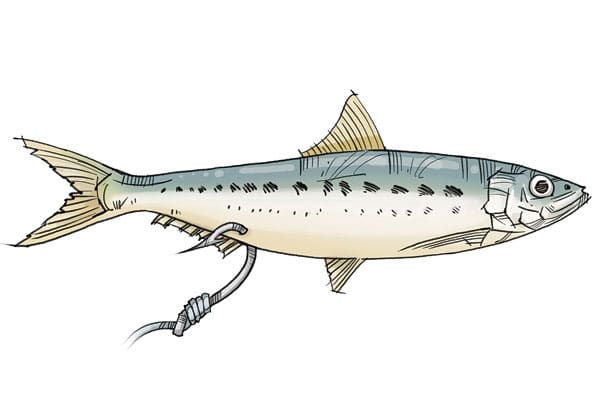
How to Hook a Sardine
Top anglers use butt-hooked sardines when they want the baits to swim down and away from the boat. This is often a key to getting bit when albacore are around but shy about coming to the boat. Baits don’t last as long this way, and they’ll often tear off the hook when you reel in.
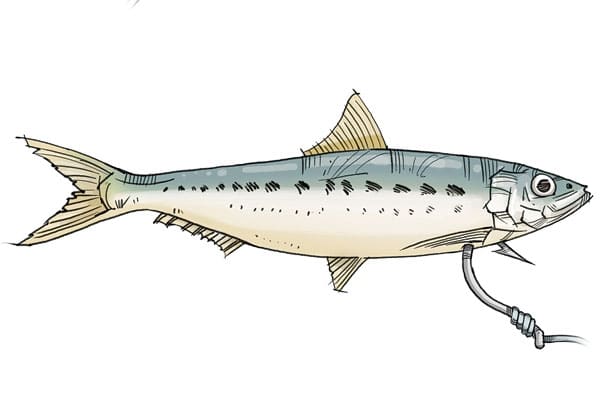
How to Hook a Sardine
Pinning the hook just above the sardine’s breastbone (just forward of and above the pectoral fins) causes the bait to swim with its head pointed downward, which makes it dive as it struggles. This presentation offers the same advantages and downsides as you get when butt hooking.



